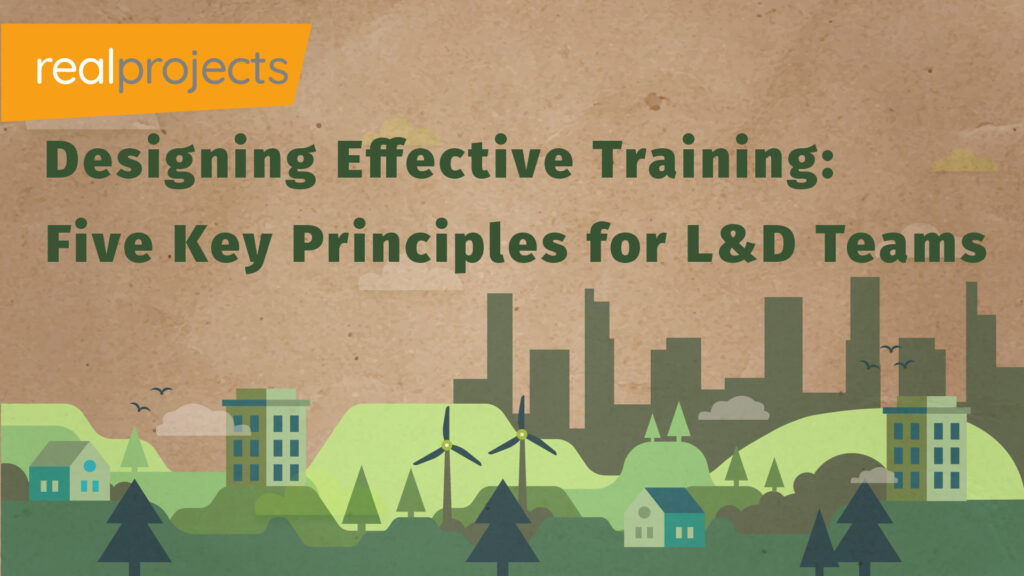How do you build a leadership pipeline when your future leaders don’t sit behind desks? Do you have a Developing Leadership programme?
That question was central to one of the most practical sessions at the Training 2025 Conference in Orlando. The session was on working in high risk environments.
The session brought together insights from three very different organisations: a billion-pound construction company, a military-connected government agency, and a large-scale civilian training team. Each tackled the same challenge: developing leaders from the frontline up.
What stood out was not just their commitment to growing internal talent, but the way each organisation embedded field-based and remote staff into their talent management and succession planning strategies.
Consider the wider context and data from the field.
- Leadership Training Deficit: Only 37% of leaders have received training in strategic planning, though 64% deem it essential (The Smarty Train and Keevee).
- Revenue Growth Linked to Leadership Development: Companies with robust frontline leadership programs see up to 25% higher revenue growth compared to peers (Forbes).
- Frontline Leaders’ Development Needs: Frontline leaders supervise an estimated 80% of the workforce, yet there is a significant gap between their development needs and what organisations provide (Harvard Business Publishing).
These figures reinforce the urgency behind what each organisation shared during the session. If you want sustained performance and leadership continuity, developing leaders at every level is not optional.
Bridging the Gap Between Technical Expertise and Leadership Development
In the construction sector, the speakers shared that leadership development often starts with a difficult transition. The shift from doing the work to leading others is not automatic. For new supervisors on job sites, it is rarely straightforward.
One construction learning leader shared how her team works across all levels of the business, from carpenters to executives, to build capability in setting expectations, giving feedback, and leading with clarity. These are not treated as soft skills. They are recognised as core leadership competencies.
A standout example came from a carpenter foreman managing a large site for a long-term client. His crew repeatedly arrived late despite clear instructions to be there at 7am.
The problem wasn’t discipline. It was the definition. “Be here at 7” meant different things to different people. This is something that L&D Directors can understand regardless of the sector that they work in.
This led to a company-wide lesson in clarifying expectations.
Language matters. If a new foreman assumes their crew knows what “on time” means, productivity and safety can quickly erode.
Developing a vocabulary or language within your business is important, we’ve seen this in the work we’ve carried out in sports, specifically in football. The language also needs to be owned by the employees. Getting buy-in from the employees and getting them to design and create it – this is vital.
By codifying these lessons into their leadership training, the organisation ensures that frontline staff are not only trained in task delivery, but also in managing people clearly and consistently.
Delivering Training That Reflects the Work Environment
A common theme across all three organisations was adapting training content to the audience. In high-risk environments, overly formal content does not land.
Training needs to be practical, familiar, and relevant to the work itself.
For the construction firm, this meant using safety conversations, already a staple of daily briefings, as a model for broader leadership messaging. The same tone and delivery that work for communicating hazards also work for setting goals, addressing documentation standards, and managing team performance.
This approach also helps field-based supervisors see leadership as part of their role, not something separate from it.
The team rebranded their competency framework into a leadership model, removed HR language, and focused on what needed to be done well on site.
Designing Leadership Development Experiences That Stick
At Marine Corps Community Services, leadership development was built around experience rather than theory. Their six-week emerging leader programme was designed with intent. Participants were exposed to unfamiliar parts of the organisation, connected with senior managers, and given the tools to understand what leadership really involves.
Sessions were held in different locations around a large military base, from marketing departments to operational hangars. Participants met peers from across departments, received practical mentoring, and gained a clearer sense of how the wider organisation operates.
The programme delivered measurable results. Promotion rates rose by 39 percent. More importantly, participants gained visibility, confidence, and connections that supported their transition into leadership roles, whether internally or across the wider public sector.
Integrating Field and Remote Staff into Succession Planning
What these three organisations demonstrated is that inclusive talent management starts with proximity and relevance. You cannot build a strong leadership bench if your programme excludes the people doing essential frontline work.
Each team found ways to bridge that gap:
- Regular jobsite visits by L&D teams to build trust and relevance
- Leadership models tailored to field responsibilities, not just office roles
- Clear communication strategies designed for diverse working environments
- Mentoring and coaching relationships that extended beyond training rooms
They also made it clear that field staff do not need to be future office-based leaders to be part of the succession pipeline. Strong leadership at every level matters. Recognising and developing leaders in context is what makes the difference.
Key Takeaways
- Leadership development must be context-driven, especially for remote and field-based roles
- Clear, explicit communication is a foundational skill that often needs to be taught
- Rebranding HR tools with operational language can improve engagement
- Experiential programmes build confidence, cross-team visibility, and internal mobility
- Succession planning should actively include staff in non-traditional settings
These insights from Training 2025 show that growing internal talent is possible, even across dispersed teams, if development is designed with reality in mind.
It is not about changing who people are. It is about developing leaders who are equipped to lead where they already work.
Importantly, you must also get out into the business and understand what is happening within the business, how you need to deliver training and how the business works. Its key to the success of your L&D strategy.
Questions
Q1: How can we develop leadership in frontline workers who aren’t office-based?
A: Use real-world scenarios and site-based language. One construction firm built leadership into daily safety briefings and rebranded HR tools to match field roles. Leadership development stuck because it felt relevant.
Q2: What’s a practical way to train emerging leaders across remote teams?
A: The Marine Corps ran a six-week programme using cross-department visits, mentoring, and real experiences. Promotion rates rose 39%. Training worked because it was hands-on, visible, and tied to actual work.
Q3: Why do many frontline leadership programmes fail to deliver results?
A: Many ignore context. Leaders aren’t trained where they work or in the way they work. Without clarity, field-based supervisors miss key skills like setting expectations and giving feedback.
Q4: How do you include remote or field teams in succession planning?
A: Visit worksites, use language that makes sense on the ground, and design leadership models around their actual tasks. Succession planning must be inclusive to build strong internal talent pipelines.



